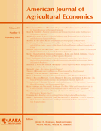The Next Great Globalization: How Disadvantaged Nations Can Harness Their Financial Systems to Get Rich by Mishkin, Frederic S.
The Next Great Globalization: How Disadvantaged Nations Can Harness Their Financial Systems to Get Rich 2006 Princeton, NJ Princeton University Press 313 $27.95.
Frederic Mishkin has had a productive career in economics as a scholar, teacher, and monetary policy maker. He has produced papers on many topics, including inflation targeting. His Money and Banking textbook is in its eighth edition, and he applied his knowledge of the monetary system as director of economic research at the Federal Reserve Bank of New York. He recently (2006) became directly involved in monetary policy as a member of the Federal Reserve Board of Governors. His book, The Next Great Globalization, is a useful survey of recent developments in global financial markets and a prescription for further opening financial markets in developing countries. It is extensively documented with 83 pages of endnotes and references.
The book emphasizes the importance of financial markets and intermediaries in allocating capital to its most productive uses. Asymmetric information can lead to adverse selection and moral hazard problems. Banks can deal with asymmetric information by acquiring information about borrowers and by monitoring their behavior. Banks are a major source of credit in high-income countries, but they allocate a larger percentage of total credit in low-income countries. Efficient banking can increase real output by raising the productivity of capital.
Mishkin enters the discussion of whether capital controls are good for developing countries. Nearly all high-income countries abandoned restrictions on international capital flows by 1980, but many low-income countries retain controls today. Although most economists support freer trade for all countries, some prominent economists (Stanley Fischer, Joseph Stiglitz, Paul Krugman, and Dani Rodrik) continue to advocate capital controls for low-income countries. Mishkin's general position is that open financial markets contribute to economic growth, but he endorses limited capital controls under certain conditions.
Mishkin acknowledges the potential problems with open financial markets by reviewing the large number of financial crises experienced by low-income countries in recent years. In addition to a general analysis of crises, he presents case studies of crises in Mexico, South Korea, and Argentina. He blames domestic policies for the crises and offers advice on how to avoid future crises. He follows his mentor, Stanley Fischer, by identifying pegged exchange rates as a source of crises. He also blames excessive borrowing of dollars and borrowing short term rather than long term. Moral hazard that induces riskier behavior is a major culprit, and explicit or implicit government guarantees contribute to moral hazard. Government-owned banks are a special problem. Their loans are based on political motives, and they typically have a higher percentage of nonperforming loans than private banks. However, they continue to make risky loans because they expect to be bailed out by their own government or by the International Monetary Fund (IMF).
In his section on how to avoid financial crises, Mishkin advises governments to get out of the banking business. There are too many monopoly state-owned banks that subordinate economic considerations to political motives. They should avoid currency mismatches by limiting the amount of borrowing expressed in foreign currency. Governments could reduce moral hazard by restricting deposit insurance and by refusing to bail out firms considered to be “too big to fail.” Central banks should avoid pegged exchange rates, and their dominant goal should be inflation targeting.
The author summarizes the main lessons from recent monetary history. First, financial globalization contributes to growth, but productive financial institutions must be based on a legal infrastructure that protects property rights. Successful institutions need not take the same form in all countries, and direct transplants of institutions from rich to poor countries may fail. However, economic incentives are important everywhere, and competition and openness shape incentives. Second, throwing money at poverty does not work. He agrees with William Easterly on the consistent failure of foreign aid and doubts that poor countries are financially constrained. Third, people in poor countries must take responsibility for their conditions and develop their own institutions. They should not blame poverty on the IMF, the World Bank, or exploitation by rich countries (contrary to arguments of Joseph Stiglitz, Jeffrey Sachs, and Bono). Fourth, international institutions and citizens of rich countries can contribute to growth in poor countries by opening their markets. In the spirit of the inscription on the Statue of Liberty, “Give me your tired, your poor,” Americans should say, “give me your goods and services.” (Mr. Mishkin is not running for Congress). Finally, economic reform requires political reform, and getting governments to subordinate special interests for the interests of the general public is very difficult. However, there have been successful transformations, including Chile, South Korea, Taiwan, Hong Kong, and Singapore.
The book is well done, but I offer some minor quibbles. China has become enormously important in the world economy, and I would have preferred to hear more from Mishkin about the alleged undervaluation of the yuan and the role of capital controls in China.
I also think he was too kind toward regulators, in general, and the IMF, in particular. He admits the current mission of the IMF is too broad (“mission creep”). However, he thinks they must be the “lender of last resort” and that they provide useful technical assistance. As the IMF is a political institution whose head is appointed by the European Union, how can one distinguish between loans intended to produce useful liquidity and loans that bail out governments that are current allies of the European Union? Furthermore, if technical assistance provided by the IMF is valued by members, would they prefer to spend the same amount of money on private consultants or on other projects? In spite of the quibbles, this book is a welcome addition to the literature by an economist and policy maker who knows his subject well.




